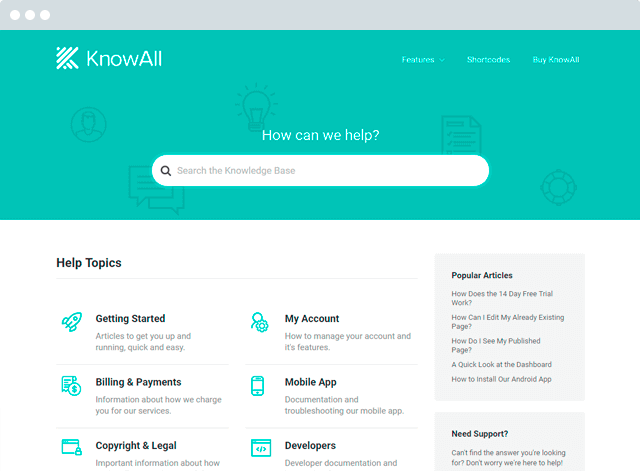How To Ask for Feedback From Customers — The Right Way

There’s no doubt that you “know” your product the best. You work with it day in and day out. And that depth of knowledge makes you the expert on your offerings. But it also puts up blinders…
So, unless you want to live in an echo chamber, you need outside feedback to address existing shortcomings and shape your future strategy.
One of the best places to get that feedback? Your customers.
While their knowledge may not be as deep as yours is, they have valuable insights that can improve your product and processes…if you’re willing to ask them to share, that is.
That’s what this post is all about – helping you ask customers for feedback. Whether you’re trying to improve your website, offer better support, or shape your product roadmap, getting feedback from your customers is something you need to do. Here’s how:
In This Article

We rigorously test and research every product that we recommend through HeroThemes. Our review process. We may also earn a commission if you make a purchase through our links.

Build a knowledge base and help your customers help themselves.
Get the ThemeStart By Getting the Theory Right…
In the next section, I’ll get into some of the actual tools and survey methods you can use to ask customers for feedback. But first, it’s important to actually learn how to effectively ask your customers for feedback.
Decide What You Actually Want Feedback On
Asking for “feedback” by itself isn’t exactly helpful. People are busy. They don’t have time to respond to general questions. Nor are general questions especially useful in most cases.
You know what I’m talking about…I’m sure you’ve seen those emails saying something along the lines of, “if you have any feedback for us, don’t hesitate to share”.
When you ask a general “feedback” question (or just put out a vague wishy-washy statement like above), you’re going to get back heaps of answers that you’ll have difficulty using.
While you’re not 100% wasting everyone’s time, you are wasting a lot more time than you should be. Don’t do that.
Instead, think about what you actually want feedback on. Do you want to…
- Improve your support?
- Offer better onboarding?
- Make it easier for customers to check out?
Narrow down to your chosen business goal and laser-focus your questions on that niche. Speaking of…
Ask Questions That Actually Elicit Helpful Feedback
While they do have their place, yes/no questions will rarely get you meaningful feedback. Just think about it – if you ask someone:
Were you able to launch your first campaign?
They might answer yes…even if it took them hours and caused frustration. You’ll get much better answers asking a question like:
What could we improve about our campaign launching process?
The second question prompts customers to expound on their experience because it’s impossible to answer the question with a yes or no.
In a nutshell, “What” and “How” are good. “Yes” and “No” are bad unless you purely want binary feedback for something like article helpfulness in your knowledge base.
For an example in the wild, look how Shopify starts off their feedback email with a juicy “how” question:

Try to Build a Real Connection
Whenever possible, you want to make a human connection when you ask for feedback. Remember – you’re essentially asking people to donate their time to you with no direct compensation.
If you’re proactively reaching out to customers, you need to, at a bare minimum, address them by their first name.
But you should also try to take things further and personalize your request to their specific situation. For example, if you’re soliciting feedback about your onboarding process, you could set the stage with something like:
Hi John,
As a new user, we were hoping you could answer a few questions…
This introduction accomplishes two things:
- It shows that you’re not just shotgunning these emails off to your entire customer base.
- It gives your customer confidence that they can actually provide valuable feedback. That is, you’re not asking them to provide an “expert” opinion – you just want their feedback “as a new user”.
Then You Need to Actually Ask Your Customers for Feedback
Now that you have a solid idea of what to do when you ask for feedback, let’s get into how you actually, ‘ya know, ask for that feedback. Because unless you get out there and start asking, none of the above matters.
While not a complete list, below are two of the most popular methods to gather customer feedback…
Take Advantage of Email Surveys
Email surveys are most companies’ bread and butter for customer feedback questions. They come in a few different shapes.
First off, one popular option is to use email to direct people to a structured feedback form. For example, Squarespace sends out a link to their survey in an email (notice that “how” question, again?):

But plenty of companies also go with the more personalized “hit reply to tell me what you think” approach. For a look at that, check out how ThemeIsle asks a “what” feedback question straight from the founder:

The former approach allows you to get more structured feedback (and also easily access all of your feedback in one place). But as long as you have systems in place to track feedback from email replies, the personal email is a great way to collect unfiltered feedback.
You can use customer feedback email templates to speed up the process here.
In-App/On-Site Customer Feedback Surveys
If you’d prefer to keep your feedback requests out of people’s inboxes, you can also opt for the on-site (or in-app) approach to customer feedback.
Sometimes, this might be as simple as a contact form or an in-page survey. But you can also get creative with asking for feedback. For example, Buffer has a whole Reddit-like feedback section where users can not only submit open-ended feedback but can also vote on feedback submitted by others:

And nowadays, in-app support tools like Intercom allow you to collect feedback from readers without requiring them to leave your interface:

Ideally, implementing a combination of the above methods would allow you to gather both:
- Targeted feedback to improve specific processes.
- Open-ended feedback for “out there” ideas you might not even have on your radar.
Wrapping Things Up
Collecting customer feedback helps you get outside your own echo chamber and see your product from the perspective of your customers. While the feedback that you collect might not always be positive, it will help you improve your business (as long as you’re asking the right questions).
Don’t just slap up the first question that comes to mind – put some thought into crafting your questions/surveys so that you not only collect feedback but collect helpful feedback.



